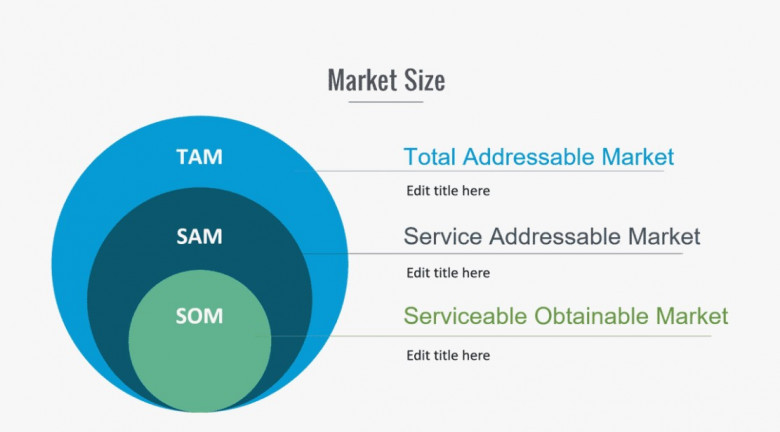views
Coming up with a product idea is exciting. But building something based solely on a gut feeling—or even limited feedback from friends or colleagues—is a risky gamble. According to studies, over 40% of startups fail because there’s no market need for their product.
That’s where market research comes in.
Validating your product idea with structured, evidence-based research can save you time, money, and energy. Whether you're an entrepreneur, a product manager, or part of an innovation team in a larger organization, this process ensures you're solving a real problem for a real audience—and doing so in a way they’re willing to pay for.
This guide walks you through the key steps to validate your product idea using market research, helping you move forward with clarity and confidence.
Step 1: Define the Problem You’re Solving
Every successful product solves a problem. Start by articulating:
-
What problem are you trying to solve?
-
Who experiences this problem?
-
How do they solve it today?
-
What’s missing in current solutions?
Don’t skip this step or assume it's obvious. Take time to interview people in your target audience, run informal polls, or conduct quick focus groups. Often, the problem may not be what you first thought—or it may not be painful enough to motivate buying behavior.
This foundation sets the tone for all your market research activities.
Step 2: Identify and Segment Your Target Audience
Understanding your ideal customer is crucial for product validation. Start with broad assumptions, then narrow them down with data. Consider:
-
Demographics: age, gender, location, education, income
-
Psychographics: lifestyle, values, pain points
-
Behaviors: how they research, purchase, and use similar products
If you’re in a B2B space, this also includes identifying job roles, company size, industry verticals, and decision-making chains. B2B market research specialists can help create these profiles with precision, using both internal data and external panels.
By clearly defining and segmenting your audience, you can tailor research efforts to those most likely to become real customers.
Step 3: Conduct Competitive Analysis
One of the most revealing ways to validate your product idea is by understanding what’s already out there—and how your solution is different or better.
Analyze:
-
Who are your direct and indirect competitors?
-
What are their strengths and weaknesses?
-
What are customers saying in reviews?
-
Where are they marketing and distributing?
Tools like SimilarWeb, G2, Trustpilot, and even Reddit or Quora can help you discover real-world feedback and frustrations. This competitive insight shows whether your product fills a genuine gap or merely duplicates what's already saturated.
Step 4: Use Surveys and Interviews to Gather Direct Feedback
This is the heart of validation. You want real opinions from real users in your target market.
Surveys
Online survey tools like Typeform, Google Forms, or SurveyMonkey allow you to gather structured feedback at scale. Focus on questions such as:
-
Would you use a product like this?
-
What are the biggest problems you face in this area?
-
How do you currently solve them?
-
How much would you be willing to pay for a solution?
Keep surveys short and focused, and consider offering an incentive for participation.
Interviews
Interviews dig deeper. You get to explore motivations, objections, language, and user behavior. They also help you validate your assumptions and build empathy with your potential users.
To go even deeper or reach specialized demographics, consider working with expert network consultants, who can connect you with decision-makers, professionals, or niche audiences you might otherwise struggle to access.
Step 5: Test with a Minimum Viable Product (MVP)
Market research isn’t just about asking questions—it’s also about observing behavior.
The best way to validate a product idea is by testing an MVP. This could be:
-
A landing page that pitches the product and collects emails
-
A clickable prototype or demo
-
A basic, working version of the product with limited features
-
A short-term trial or pilot program
Track metrics like sign-ups, bounce rates, demo requests, and actual usage to gauge real interest. If people aren’t engaging, it’s a sign to refine or pivot before scaling.
Step 6: Monitor Early Traction and Feedback
After your MVP is in users' hands, listen closely to what they’re telling you—both in words and actions.
Look for:
-
Feature requests or common complaints
-
Where users drop off or lose interest
-
What they love and what they ignore
Use this data to iterate on your product. Early adopters often provide the best clues about what direction to take next, what needs improving, and what messaging resonates most.
Step 7: Analyze Market Size and Business Viability
Even if users love your idea, it won’t succeed unless there’s a viable business case behind it.
This means validating:
-
Total addressable market (TAM)
-
Pricing sensitivity
-
Customer acquisition cost (CAC) vs. lifetime value (LTV)
-
Potential for scale and recurring revenue
Market sizing reports, industry trend analysis, and financial modeling are key here. Collaborating with a seasoned research partner or internal analytics team will help you stress test your assumptions and build a more compelling go-to-market strategy.

Bonus Tip: Use Trend Data to Spot Timing Risks
Sometimes, your idea might be good—but it’s too early (or too late). This is where tracking market research trends becomes invaluable.
Ask:
-
Is this a growing or shrinking category?
-
Are competitors entering or exiting the market?
-
Are regulations or technologies on the horizon that could shift demand?
Tools like Google Trends, Gartner reports, and LinkedIn insights can help you gauge timing. Jumping into a growing wave—not a fading one—can be the difference between success and struggle.
Conclusion
Validating your product idea with market research isn’t about getting a perfect answer—it's about reducing risk and making smarter decisions based on real-world data.
By combining structured feedback, behavioral testing, and expert input, you give your idea the best possible chance of success in a crowded, competitive landscape.
Whether you're a solo founder or launching innovation in a large enterprise, partnering with b2b market research specialists or expert network consultants can give you the edge needed to turn a good idea into a thriving business.
Don't guess. Research first. Then build.













Comments
0 comment